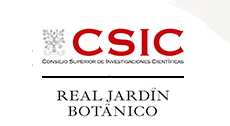Scientific Area
Abstract Detail
Nº613/1419 - Genome size in Zingiberaceae correlates with the life strategies, plant traits and habitat preferences
Format: ORAL
Authors
Elika Zvesk1*, Otakar da O.2, Jana Leong-kornickov3, Zuzana Chumov1, Pavel Trvncek1, Mark F. Newman4, Axel D. Poulsen4, Alžbeta Bhmov2, Hana Chudckov5, Tom Fr5
Affiliations
1 Institute of Botany of the Czech Academy of Sciences, Pruhonice, Czech Republic
2 National Museum in Prague, Prague, Czech Republic
3 Singapore Botanic Gardens, Singapore
4 Royal Botanic Garden Edinburgh, Edinburgh, United Kingdom
5 Faculty of Science, Charles University, Prague, Czech Republic
*zaveskae@email.cz
Abstract
Plant species with large genomes tend to be excluded from climatically more extreme environments with a shorter growing season. Species that occupy such environments are assumed to be under natural selection for more rapid growth and smaller genome size (GS). However, evidence for this was so far available only for temperate organisms. We studied the evolution of GS in two subfamilies of the tropical family Zingiberaceae to find out whether species with larger genomes are confined to environments where the vegetative season is longer. We tested our hypothesis on 337 ginger species from regions with contrasting climates by correlating their GS with an array of plant traits and environmental variables. We revealed sixteen-fold variation in GS which was tightly related to shoot seasonality. Negative correlations of GS with latitude, temperature and precipitation emerged in the subfamily Zingiberoidae, demonstrating that species with larger GS are excluded from areas with a shorter growing season. In the subfamily Alpinioideae, GS turned out to be correlated with the type of stem and light requirements and its members cope with seasonality mainly by adaptation to shady and moist habitats. The OrnsteinUhlenbeck models suggested that evolution in regions with humid climates favoured larger GS than in drier regions. Our results indicate that climate seasonality exerts an upper constraint on GS not only in temperate regions, but also in the tropics, unless species with large genomes find alternative ways to escape from that constraint.




